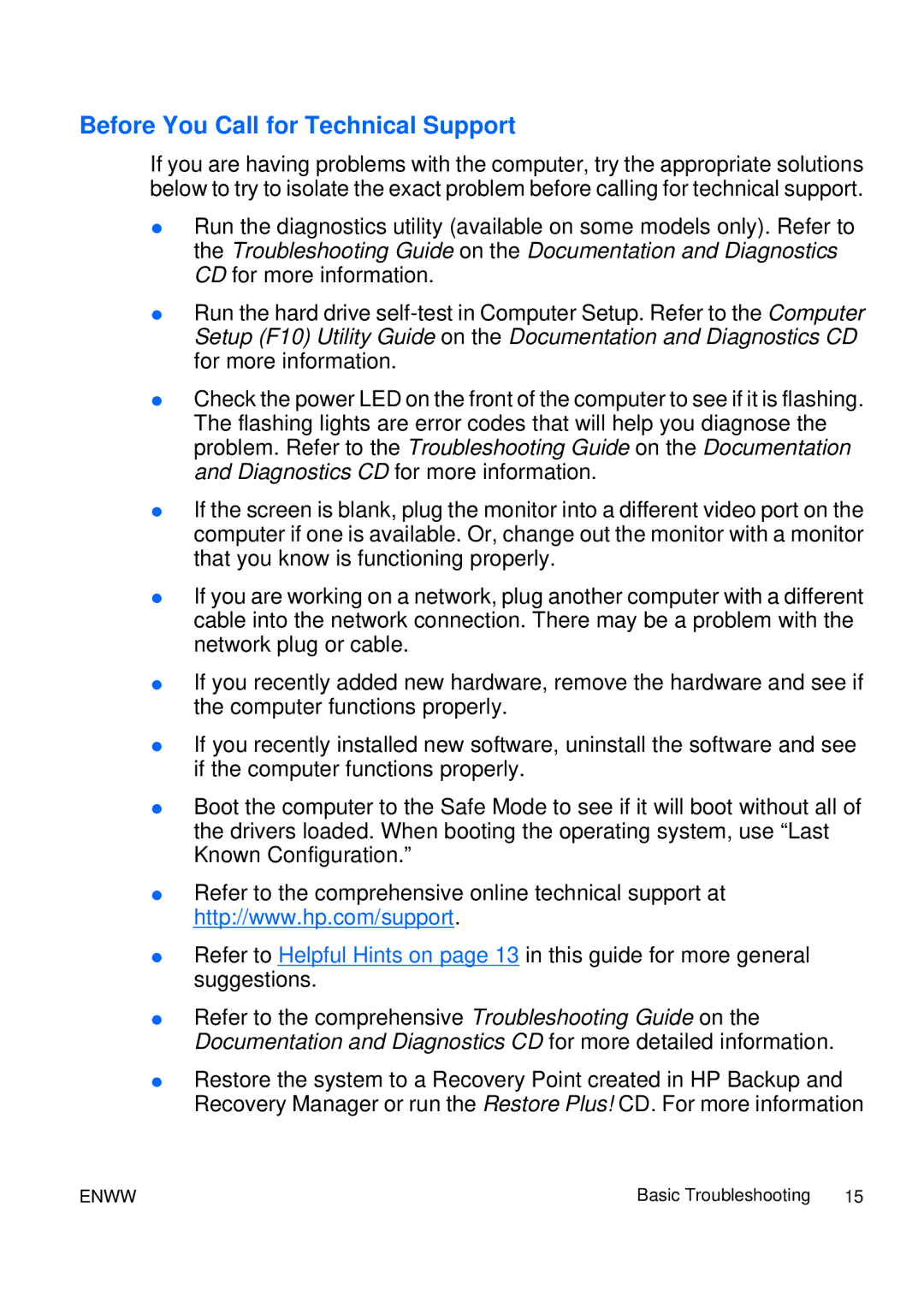Before You Call for Technical Support
If you are having problems with the computer, try the appropriate solutions below to try to isolate the exact problem before calling for technical support.
●Run the diagnostics utility (available on some models only). Refer to the Troubleshooting Guide on the Documentation and Diagnostics CD for more information.
●Run the hard drive
●Check the power LED on the front of the computer to see if it is flashing. The flashing lights are error codes that will help you diagnose the problem. Refer to the Troubleshooting Guide on the Documentation and Diagnostics CD for more information.
●If the screen is blank, plug the monitor into a different video port on the computer if one is available. Or, change out the monitor with a monitor that you know is functioning properly.
●If you are working on a network, plug another computer with a different cable into the network connection. There may be a problem with the network plug or cable.
●If you recently added new hardware, remove the hardware and see if the computer functions properly.
●If you recently installed new software, uninstall the software and see if the computer functions properly.
●Boot the computer to the Safe Mode to see if it will boot without all of the drivers loaded. When booting the operating system, use “Last Known Configuration.”
●Refer to the comprehensive online technical support at http://www.hp.com/support.
●Refer to Helpful Hints on page 13 in this guide for more general suggestions.
●Refer to the comprehensive Troubleshooting Guide on the Documentation and Diagnostics CD for more detailed information.
●Restore the system to a Recovery Point created in HP Backup and Recovery Manager or run the Restore Plus! CD. For more information
ENWW | Basic Troubleshooting 15 |
